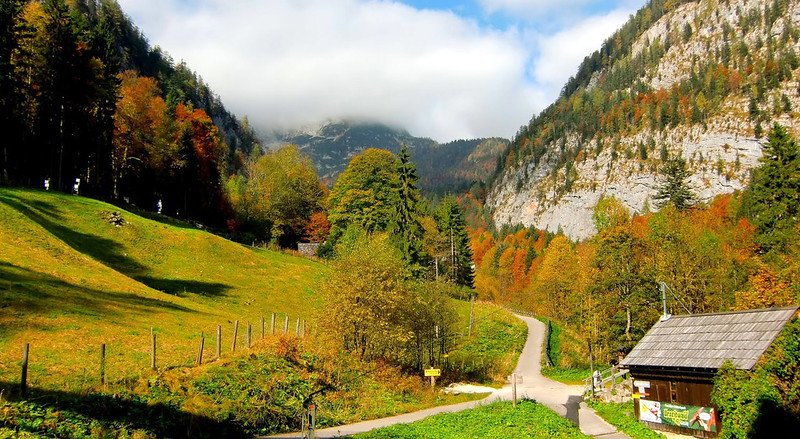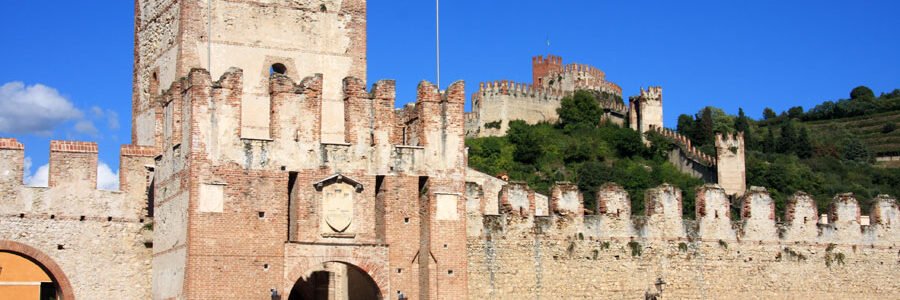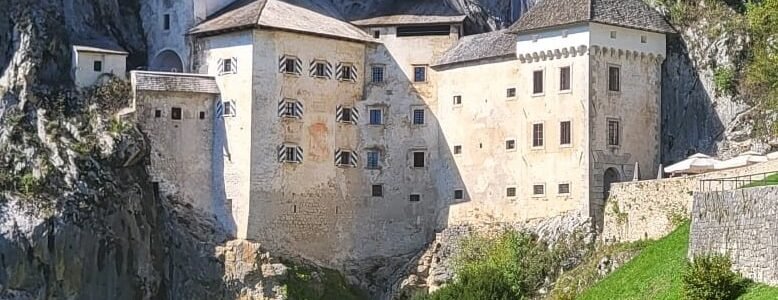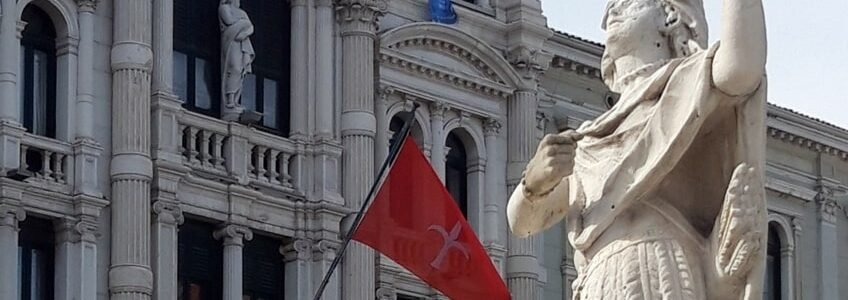Hallstatt on Foot
Starting Where No One Does
Most visitors begin in the center, but locals don’t. They start near the cemetery—quiet, shaded, elevated. It’s not morbid. It’s honest. From here, Hallstatt’s layout reveals itself. Stone paths curve around houses, not through them. Steps are uneven. The air is colder. You see the lake, but from above. You hear fewer voices. There’s no shop for the first ten minutes. Just the sound of feet, maybe a broom sweeping stone. If you’re looking for the heart of Hallstatt, start at its edges.
Down Through Living Spaces
The descent into the village isn’t through a main road—it’s through lived-in corridors. A wooden staircase passes behind balconies strung with drying towels. You smell cooking. Not restaurant cooking, but early lunch: onions, broth, something baking. You see firewood stacked tight in symmetrical rows. A radio plays inside one home, too low to recognize the language. The buildings feel taller when seen from above. Down here, Hallstatt feels inhabited. Not displayed.
By the Lake, Without a View
You reach the lake, but not the view people post. This side path hugs the edge, where benches face sideways, not out. It’s where old men sit and tie fishing knots. Where locals walk dogs and don’t stop for photos. The water laps at moss-covered steps that no one uses anymore. You pass a house with wet boots outside the door and buckets half-filled with rainwater. There’s no sound but your steps, and sometimes ducks. You forget to check your phone.
Where Deliveries Happen
Past the chapel, there’s a narrow passage between two houses. It looks private, but isn’t. A man unloads boxes from a van. He nods, doesn’t smile. It’s not rude—it’s efficient. Hallstatt may be small, but it functions. Bread arrives. Paper goods. Tools. You see a back entrance to a hotel that looks like an apartment. A woman checks inventory in the doorway. This part of town wasn’t made for guests. It was made for supply. The beauty is secondary.
How You Got Here Matters Too
There’s a difference between arriving in Hallstatt and entering it. If your day began in Venice, surrounded by noise, a transfer from Hallstatt to Venice gives you that contrast. It’s not just about location—it’s about momentum. You don’t reach Hallstatt to consume it. You reach it to slow down, maybe without noticing. That change is hard to describe. But the walk you just took explains it better than words.
Back Streets and Real Entrances
Keep walking uphill, and the path tightens. There’s a railing made of rusted iron. On your right, a gate leads into a garden—overgrown but tended. You hear a chicken, though you don’t see it. Someone coughs inside a house. A child looks through a window and doesn’t wave. You pass the back of a café. It smells of bleach and yeast. The staff entrance is propped open with a rock. Tourists walk the front side. You walk the one with noise, bins, real life.
The School Path
Locals with children use this trail—narrow, direct, shaded. It’s marked, but only for those who know to look. You pass a bulletin board with handwritten announcements. A birthday greeting. A piano lesson. A lost scarf. Here, you feel distance from the lake. No views, no souvenirs. Just stone walls, sharp turns, and routine. You realize Hallstatt isn’t built for you. It’s built for people to live in. And they do—fully, simply, without spectacle.
Pause Above the Square
As you descend again, you come to a ledge above the market square. Most tourists look up from below. You’re already here. You sit on a bench that faces rooftops, not storefronts. The square begins to fill. You hear snippets in five languages. A tour guide explains when Mozart visited. He didn’t. You drink water, quietly. You’ve walked most of the town without buying anything. And somehow, you feel more connected to it than those lining up for the viewpoint.
A Change in Light, A Change in Pace
By now, the light has shifted. Hallstatt in early afternoon becomes something else—louder, warmer, more practiced. That’s not bad. It just is. You move behind the shops, where cool air sits in doorways. You see signs in German only. A woman waters her plants with a teapot. Someone pushes a cart filled with empty bottles. You step aside. You’re not a guest anymore. You’re just someone walking.
A Slower Way to Leave
Instead of following signs to the ferry, turn left into a residential path that arcs back to where you began. It passes no major landmark. Just sheds, staircases, and a metal fence with one shoe hanging on it. A cat watches you from under a chair. There are no good photos here. But if you listen, you’ll hear what most miss: the sound of Hallstatt not being visited. Just lived.
The Anchor Beneath the Picture
Tourists love the main photo—the steeple, the mountains, the reflection. But locals rarely walk there. They live under it, around it, behind it. If you want to know Hallstatt, don’t frame it. Follow it. Through side alleys. Down supply paths. Past shoes left out overnight. And when you’re ready to learn more about the real Hallstatt — how it’s run, how it’s changing — the community-run tourism site for Hallstatt offers more than photos. It offers context.
Final Cut
You finish where you started, but it doesn’t feel like a loop. It feels like a map that rearranged itself for you. You saw the parts no one shows, heard what isn’t said, and walked in step with something slower. That’s not tourism. That’s being somewhere. And if Hallstatt stays with you, it won’t be because of what you posted. It’ll be because of how you walked.
Hallstatt on Foot
Hallstatt on foot is not a hike — it’s a slow unraveling of detail. There are no grand boulevards or fast lanes, just narrow paths, wooden stairs, and stone alleys that reveal a rhythm older than tourism. When arriving from cities like Ljubljana or Zagreb, walking becomes a deliberate act: a way of decoding Hallstatt’s silence.
Cars are not banned here by accident. Streets were made for feet long before rubber tires. Each step brings you closer to the bones of the place — where salt workers lived, where balconies sag with ivy, where doors face the lake like faces seeking reflection. Arriving via a Ljubljana to Hallstatt transfer means the car stops before the story starts.
- Hallstatt from Ljubljana Airport — step into stillness on arrival
- Zagreb to Hallstatt — end your journey where roads disappear
- Hallstatt to Bled — swap one lakeside walk for another
- Browse more slow-travel destinations
- See full blog archive
Hallstatt on Foot: A Town Made for the Human Pace
- Begin your visit where the pedestrian tunnel meets the lake
- Walk the upper staircases above the church for panoramic stillness
- Step through narrow lanes barely wider than your shoulders
- Spot salt traces near the chapel ruins just above the viewing platform
- Move without maps — the village reveals itself step by step
When Walking is the Only Way to Understand
Hallstatt on foot lets the town speak — softly, slowly, and without filter
To complement your walk with deeper cultural insight, visit the Hallstatt Official Tourist Office.
RECENT POSTS
- 6 A.M. at Plitvice June 24, 2025
- Where Locals Swim in Opatija June 23, 2025
- Hallstatt on Foot June 23, 2025





























































Leave a Comment